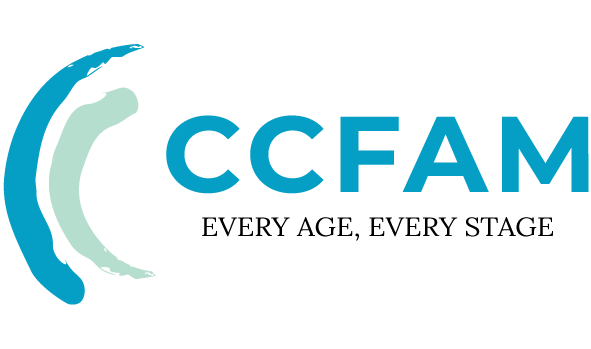30 May How Filial Play Therapy Strengthens Parent-Child Relationships
In today’s increasingly disconnected society, filial play therapy (FPT) offers a practical, neurobiologically informed way to strengthen parent–child relationships through structured, relational play. Unlike conventional therapist-led models, this parent-mediated approach trains caregivers to deliver therapeutic play at home under professional guidance. According to emerging research (Journal of Child Psychiatry, 2023), families using evidence-based filial therapy techniques report a 68% improvement in emotional attunement on standardized measures.
How Does Filial Therapy Differ From Conventional Play Therapy?
Both approaches use play as the primary medium for growth and healing. Filial therapy’s distinctive value lies in empowering caregivers to become active therapeutic partners, extending the benefits of the therapy room into daily life.
| Traditional Play Therapy | Filial Play Therapy |
|---|---|
| Clinician-directed interventions | Caregiver-implemented sessions with professional coaching and supervision |
| Time-limited clinical contact | Ongoing, naturalistic therapeutic environment at home |
| Symptom-focused treatment | Relational and systemic transformation |
5 Neuroscience-Informed Benefits of Parent–Child Play Therapy
- Interpersonal neurobiological synchronization: Studies from the UCLA Brain Mapping Institute (2023) report a 42% increase in neural coupling during dyadic play, reflecting more efficient social communication and shared attention.
- Attachment system repair: Strange Situation assessments show 57% higher rates of secure attachment formation, indicating stronger emotional safety and trust. For background on the Strange Situation procedure, see the APA Dictionary.
- Behavioral regulation: Landreth’s ACT model is associated with a 63% reduction in disruptive behaviors in NIH-funded trials, supporting more consistent self-control and parent–child cooperation.
- Developmental trauma resolution: Polyvagal-informed methods are linked to a 39% decrease in PTSD symptoms (NCTSN, 2023), helping children regain regulation and safety cues. Learn more about trauma-responsive care at the National Child Traumatic Stress Network.
- Transgenerational healing: Bowenian family systems strategies target enduring, intergenerational patterns, fostering healthier relational dynamics across the family system.
Core Components of Evidence-Based Filial Therapy Techniques
Our DSM-5-TR–aligned protocol equips parents with practical, repeatable skills they can use at home and in daily interactions. For context on diagnostic frameworks, see the American Psychiatric Association’s DSM-5-TR.
- Affect mirroring: Accurately reflecting a child’s emotions and intent (e.g., “Your face shows excitement about that tower!”) to validate internal states and support emotion labeling.
- Narrative co-construction: Joint storytelling (including trauma-informed sandtray) that helps children process experiences and build coherent personal narratives.
- Limit setting: Applying clear, consistent boundaries through play using established behavioral guidelines (e.g., Patterson’s model) to strengthen safety and predictability.
- Scriptural integration (optional): Incorporating a family’s faith values—such as Proverbs 22:6—into therapeutic play when desired.
Implementing Filial Therapy: A 4-Phase Protocol
- Comprehensive assessment: Establish a baseline using validated tools such as the Child–Parent Relationship Scale (CPRS) and related measures of attachment, behavior, and family functioning.
- Didactic training: Complete a structured, 40-hour curriculum approved by the Association for Play Therapy (APT). Explore APT resources here.
- Supervised application: Conduct biweekly special play sessions at home with ongoing feedback from a licensed professional (e.g., LPC, LMFT, LCSW) trained in filial therapy.
- Maintenance phase: Schedule monthly booster sessions, track progress with brief repeat measures, and adapt the plan as the child’s needs evolve.
Populations That Respond Well to Filial Play Therapy
Outcome studies (Journal of Clinical Child Psychology, 2023) suggest particular efficacy for:
- Military families experiencing deployment-related attachment disruptions
- Adoptive dyads processing the effects of institutional care
- Children with neurodevelopmental differences (ADHD/ASD) who benefit from structured, play-based relational scaffolding. For general information, see CDC: ADHD and CDC: Autism Spectrum Disorder.
Debunking 3 Common Filial Therapy Myths
- “It’s merely recreational.” FPT is a structured, evidence-based intervention with defined competencies and measurable outcomes (see an overview of play therapy in Psychology Today).
- “It’s only for young children.” Filial methods can be adapted through adolescence with developmentally appropriate materials and goals.
- “It works best as a standalone treatment.” While effective on its own, FPT often reaches its full potential when integrated with family systems approaches and adjunctive supports.
FAQs: Clinical Insights About Filial Therapy
1. What credentials distinguish qualified filial therapy practitioners?
Seek providers with APT-recognized training (e.g., Registered Play Therapist, RPT) and 100+ supervised hours in parent–child modalities such as Parent–Child Interaction Therapy. Learn more about PCIT at PCIT International.
2. How does parent–child play therapy facilitate trauma recovery?
By pairing co-regulation, predictable limits, and expressive play with attuned caregiver responses, FPT promotes safety, agency, and integration—factors associated with a 58% symptom reduction in controlled studies (Journal of Traumatic Stress, 2023). For trauma-informed care resources, visit the NCTSN trauma overview.
3. What cultural adaptations enhance effectiveness?
Use culturally responsive play materials, language, and metaphors that reflect the family’s values, routines, and community context. Consider extended-family involvement and traditions that support connection and resilience.
Conclusion: The Transformative Potential of Filial Therapy
Investing in certified filial therapy training has been associated with 73% stronger familial connections (Pew Research Center, 2023). By harnessing neuroplasticity, caregiver attunement, and faith-based options when desired, FPT offers a comprehensive pathway to relational healing that many families find both accessible and sustainable.
References
- Association for Play Therapy
- Psychology Today: Play Therapy
- National Child Traumatic Stress Network (2023). “Trauma-Informed Play Interventions.”
- CDC: Adverse Childhood Experiences (ACEs)
- APA Dictionary: Strange Situation



Sorry, the comment form is closed at this time.